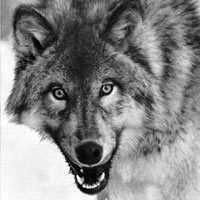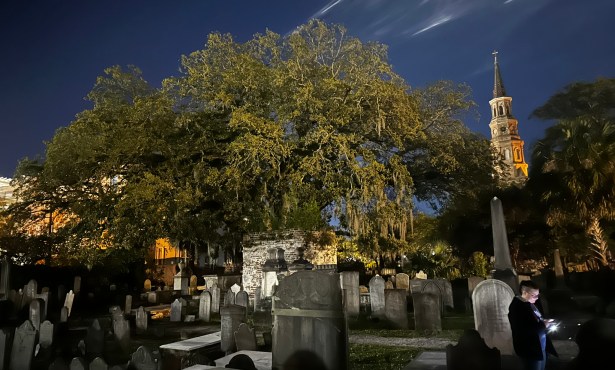Werewolves and the Undead
From Mental Illness to Exploding Corpses
All kinds of spooks will be out in full force this weekend to celebrate Halloween. But while we wear costumes with levity today, it wasn’t so long ago that any rational person wouldn’t dream of, for example, claiming to be a werewolf. And the undead weren’t just some trick-or-treaters with scary facial makeup and tattered clothes; they were something people actually worried about.
While the history and biology behind vampires was explored last week in Biology Bytes, in this spooky sequel we’ll similarly visit the origins of other undead creatures and werewolves.
Ancient Werewolves: The idea that a person could shape shift, or turn into an animal, is common to many mythologies in the world. The shape shifter we’re probably most familiar with today is the European-based werewolf, which, in folklore, is a person who can change into a wolf. Throughout history, werewolves were viewed as morally corrupt, bestial people cursed (or gifted) by a supernatural power to become wolves.

These motifs were present in one of the most famous and oldest werewolf stories, which involves Lycaon, an ancient king of Arcadia (in Greece). According to the myth, Lycaon was so morally depraved that, to punish him, he was permanently turned into a wolf by the god Zeus. But it wasn’t just degenerate kings that became werewolves; the transformation was so common that it got its own scientific name: lycanthropy (“lykos” means “wolf” in Greek, and “anthropos” is Greek for man).
Like the story of Lycaon, most of the ancient documented cases of lycanthropy were associated with wicked deeds. In Charlotte F. Otten’s book A Lycanthropy Reader, multiple stories are recounted of people who claimed to be able to turn into a wolf, usually upon donning a wolf-skin or special garment and applying a special ointment. (And sometimes, after Christianity became prevalent in Europe, deals with the Devil were involved). The skins and ointments didn’t actually change them into wolves, of course, but they may have served as excuses to unleash repressed desires. These werewolves would run through forests at night and commit crimes such as grave-robbing, incest, murder, rape, and cannibalism, often while taking on wolfish postures and voices. Such acts frightened villagers (for good reason).
However, other suspected werewolves were much milder in their acts, and may simply have liked to walk around graveyards at night, possibly suffering from insomnia. Because of their unusual behaviors, such individuals may have become alienated from the rest of human society. Combined with the presence of real wolves (possibly rabid) that would dig up corpses (before the widespread use of coffins), attack cattle, and generally terrorize people, and other people who claimed to be able to turn into wolves, one can see how such an innocent, outcast individual could quickly become a scapegoat—or suspected werewolf.
A Pathological Condition: From early times, people have investigated possible biological explanations for the unusual behaviors of self-proclaimed werewolves. During the 600s A.D., an influential Byzantine Greek physician, Paulus Aegina, wrote extensively about lycanthropy and, not believing it to have anything to do with demons or spirits, attributed it to malfunctions of the brain, the use of hallucinogenic drugs, and “humoral pathology.” Although medicine has come a long way since then, even at that early time lycanthropy was recognized as a mental disease (which it is mostly seen as today) and people attempted to treat it.
However, it wasn’t until the 1500s and 1600s A.D. that people in Europe were starting to realize that humans could not actually turn into wolves. (A strong proponent of this idea was Reginald Scot in England; he outspokenly rejected superstitions about demonology and witchcraft.) A famous werewolf trial in 1603 helps illustrate this change in thought. Jean Grenier, a 13-year-old boy from a poor family in France, claimed to be able to turn into a wolf by adorning a wolf-skin and salve that a man in the forest gave him. In this “form,” he attacked, killed, and ate several young children in the village. No one believed he actually changed shape, and he was found mentally incompetent and sentenced to a monastery to receive proper moral instruction. However, Jean could not be rehabilitated at the monastery and eventually lost all rational thought, dying there at the age of 20.
The Modern Werewolf: Just like the vampire, the werewolf has significantly transformed from its folklore origins to the fictional creature of today. Werewolves of folklore transformed by donning a wolf-skin, while fictional werewolves undergo their transformation at will or through the compulsion of the full moon, and are normally dealt with using silver bullets (not with as with the vampire, because most modern medical explanations for werewolves try to account for the appearance of the modern fictional adaptation—that is, a creature that looks like a cross between a wolf and a human—rather than focusing on the original folklore, they have been largely discredited.
Hypertrichosis: One of the most popular, if mostly discredited, medical theories was that belief in werewolves stemmed from people with a rare condition called hypertrichosis. Hypertrichosis is a condition where a person grows hair where it isn’t normally, either in localized areas or over their entire body (sometimes everywhere except their palms and soles). It can be hereditary (and can be caused by one of a number of different genetic mutations) or show up later in life (often from cancer or medications).
Perhaps the most famous case of hypertrichosis was that of Julia Pastrana, who was born in Mexico in the early 1800s. Her body was covered with black hair, most noticeably on her face, where she had a thick beard. As a child, she was considered a local celebrity and was given a good education at the governor’s residence.
At the age of 20, she left for the U.S., where she eventually met Theodore Lent, a New York showman, who took her on tour in Europe. She was often touted as being a human-orangutan hybrid, and called “Baboon Lady” or the “Bearded and Hairy Lady.” Lent later married Julia, although she died at the age of 26 shortly after the birth of their son, who also displayed hypertrichosis and died when two days old. Ever the showman, Lent had his wife and son stuffed and preserved and continued the tours with them for decades. Lent remarried a European woman who also had hypertrichosis, named her Zenora Pastrana, and resumed his tours with her. Lent was soon committed to an insane asylum, and died shortly thereafter.
Other Explanations: In the 1960s, it was suggested that werewolf sightings may have actually been of people with the rare disease porphyria, which was discussed last week in connection with vampires. People suffering from porphyria can be photosensitive, and have abnormal teeth, facial hypertrichosis, neuropathy, hallucinations, and depression, among other symptoms. Again, this line of speculation doesn’t take into account that werewolves of folklore became wolves, not wolf-men. As described in the historic accounts above, werewolf folklore is most likely based on the actions of delusional individuals combined with the common fear of real wolves.
Today, people in many parts of the world still suffer mental delusions that they can transform into a fearsome animal; clinical lycanthropy is a recognized mental illness.
Lycanthropy is thought to be caused by a number of mental disorders, including schizophrenia, psychosis, forms of depression, hysterical neurosis, and others. Turns out Paulus Aegina in the 600s A.D. wasn’t that far off the mark after all.
The Undead: The causes of “undead” vampires, which were explored last week, are probably very closely related to other historical undead events. Corpses were suspected of being vampires, or undead in general, because they decomposed in unexpected ways. For example, during decomposition a corpse may double its size due to a build up of gases in the abdominal cavity, eventually bursting. If many people died from a plague during warm months and were hastily buried in shallow graves, after about three weeks grave-diggers would certainly hear some inexplicable noises. Combined with the actions of scavenger animals digging up corpses, it would appear as though the dead were rising from their graves.
Zombies are another variety of undead creature that has become quite popular in the media in recent years. Zombies have their origins in the spiritual belief system of West African Voodoo (or “Vodun”); typically they’re thought to be a reanimated or controlled corpse. In the early 1980s, ethnobiologist Wade Davis proposed that “witch doctors” used a combination of a neurotoxin (tetrodotoxin), dissociative drugs, and societal reinforcement to make a person take on a highly suggestible, death-like state, believing they are a zombie. However, Davis’s theory has been dismissed by the scientific community since tetrodotoxin poisoning does not induce described zombie-like states, as well as other factors that don’t quite add up. Various media portrayals have offered new medical explanations for the fictional zombie, including a mutated strain of the mad cow disease, in the movie Zombieland.
It’s encouraging to be reminded that scientific explanations are continually catching up with “inexplicable” phenomena (and correcting understandings we previously thought were correct). So while this concludes our spooky Halloween edition of “Biology Bytes,” stay tuned for many more discussions on advancements in our understanding of biology.
For more on scientific explanations for werewolves, see Charlotte F. Otten’s book A Lycanthropy Reader: Werewolves in Western Culture, Christopher Hals Gylseth and Lars O. Toverud’s book Julia Pastrana: The Tragic Story of the Victorian Ape Woman, Paul Barber’s book Vampires, Burial, & Death, or Wikipedia’s article on “Werewolf.”
Biology Bytes author Teisha Rowland is a science writer, blogger at All Things Stem Cell, and graduate student in molecular, cellular, and developmental biology at UCSB, where she studies stem cells. Send any ideas for future columns to her at science@independent.com.



